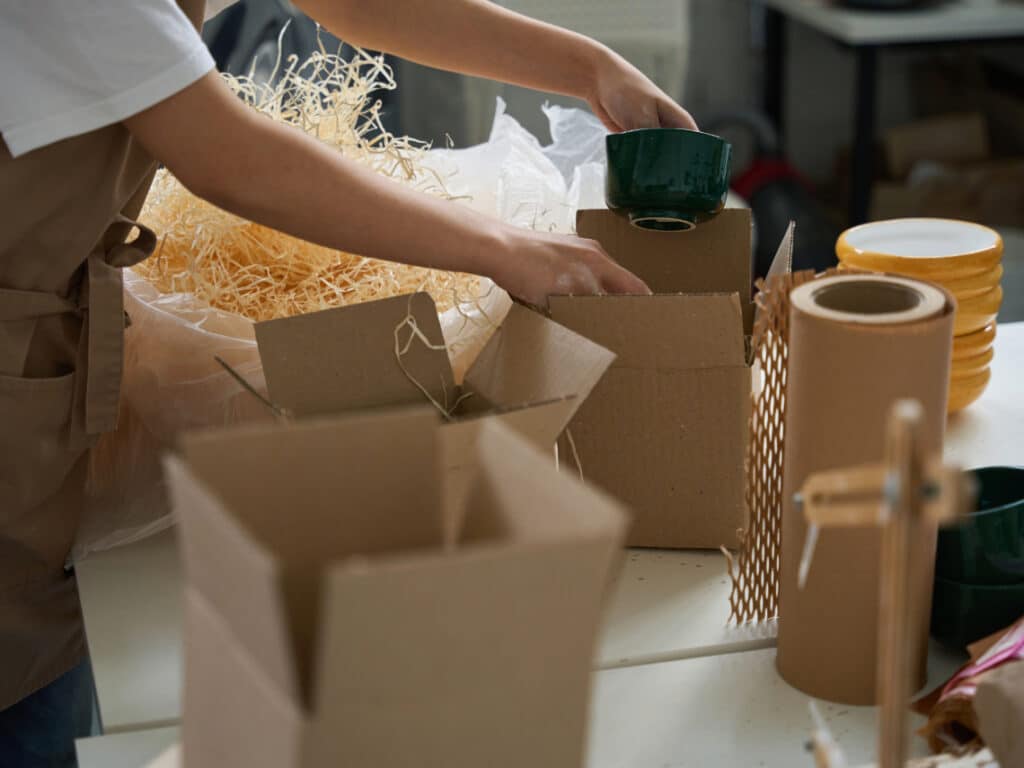In today’s market, packaging does more than contain and protect a product. It also reflects a brand’s values and long-term vision.
As consumer expectations shift toward environmentally responsible business practices, sustainable design in packaging has become a critical standard for companies seeking to stay competitive and credible.
At Pioneer Packaging, we understand that true innovation in packaging lies at the intersection of functionality, cost-effectiveness, and environmental stewardship. These principles are not just design considerations; they are essential elements of a responsible brand identity.
The Role of Detail in Sustainable Design
Effective packaging begins with attention to detail. Every component, from material selection and structural engineering to ink and adhesives, plays a role in sustainability. Packaging that aligns with sustainable design principles must do more than reduce waste; it should also tell a story. A well-designed package can communicate a brand’s commitment to environmental responsibility and its awareness of how design impacts both consumers and the planet.
Sustainable packaging helps support a brand’s environmental initiatives by minimizing excess material, maximizing recyclability or compostability, and reducing the overall carbon footprint of production and transportation. Consumers are paying attention to these details, and brands that incorporate sustainable design early in their packaging strategy can foster trust and loyalty in a competitive marketplace.
Functionality: The Backbone of Sustainable Packaging
While sustainability is a priority, functionality remains essential. Sustainable design does not mean compromising on performance. Packaging must still protect the product throughout the supply chain, extend shelf life, and ensure consumer convenience. The goal is to meet performance standards while using fewer resources or alternative materials that are less harmful to the environment.
For example, replacing traditional plastic clamshells with molded fiber trays or using flexible pouches instead of rigid containers can reduce material usage without sacrificing protection or usability. Smart structural design, such as collapsible or stackable packaging, can also enhance logistics efficiency and support sustainability goals.
Cost Benefits of Sustainable Design
It is a common misconception that sustainable design automatically means higher costs. In many cases, thoughtful material reduction and design optimization can result in significant cost savings over time. Lightweighting packaging, eliminating unnecessary components, and sourcing locally can reduce both material expenses and transportation costs.
Additionally, as Extended Producer Responsibility (EPR) legislation and other sustainability regulations expand, investing in sustainable packaging today can help companies avoid compliance costs and penalties in the future. Brands that proactively adapt to sustainability trends are better positioned to scale responsibly and remain compliant with evolving standards.
Environmental Responsibility: Rethinking Packaging’s Afterlife
A key component of sustainable design is planning for the afterlife of packaging. This means considering what happens after the consumer discards the package. Can it be easily recycled, composted, or reused? Is it made from renewable or biodegradable materials?
Using post-consumer recycled content, compostable films, water-based inks, and bio-based adhesives can reduce a package’s environmental impact. Designing for disassembly, so that materials can be separated and recycled, adds another layer of responsibility. Sustainable design considers not just where packaging comes from, but where it ends up.
Achieving Sustainable Design: Aligning Mission, Design, and Supply Chain
To implement sustainable design effectively, businesses must align their packaging choices with their broader mission and values. Sustainability should not be an afterthought but a core component of packaging development.
This process involves:
- Defining clear sustainability goals that align with your brand
- Designing packaging that meets functional, environmental, and cost criteria
- Building strong relationships with suppliers who share your values and offer eco-friendly solutions
- Using data to track performance and make informed improvements
By connecting your mission with your materials and supplier partnerships, you create a comprehensive and practical approach to sustainable design. Each step in the supply chain becomes an opportunity to reduce environmental impact and add brand value.
Sustainable design in packaging is more than a trend. It is a strategic business imperative. By prioritizing functionality, managing costs, and taking environmental responsibilities seriously, brands can lead with purpose and innovation. Whether your business is taking its first steps toward sustainability or refining a long-standing strategy, these foundational principles provide a clear path forward.
Pioneer Packaging: Your Custom Packaging Solution Company
For over 38 years, Pioneer Packaging has been your company’s go-to for designing product packaging that sells and performs.
So whether you’re looking to get your paper product packaging at affordable prices or attract new consumers, we’ll find the best packaging solutions that fit your needs. We strive to keep costs down as much as possible to help our customers keep their brands moving along production lines.
Contact Pioneer Packaging today and learn why we’re a leader in B2B packaging solutions.
